Finding the right option for your desired output and budget is imperative in a highly competitive market. That’s why an increasing number of growers are turning to light-emitting diode (LED) lighting as their new hero when building facilities and optimizing existing grow rooms.
With the right LED grow lights, plants receive the light they need with less reliance on traditional high-intensity discharge (HID) and incandescent bulbs known for their high heat and energy consumption.
Types of LED grow lights
LED lights come in three distinct types: standard, chip-on-board (COB), and spread.
- Standard LEDs have dozens or even hundreds of small, low-wattage LEDs in a single fixture. These lights are often called “purple LEDs” for their mix of red and blue lights.
Standard or purple LEDs were among the first of this technology to be applied to indoor growing. However, improvements have been made with COB and spread-style lights for better light output, efficiency, and control.
As an older technology, these lights often are available from international manufacturers with a lower starting price, allowing budget-conscious growers to get in on the trend.
- COB LEDs include hundreds of tiny LED lights installed on a single chip in direct contact with a substrate to produce LED arrays.
COBs come in multi-chip packages, greatly increasing the lumen output per square inch. When compared with a standard LED, COBs offer better light density through the use of multiple diodes, allowing them to produce intense white light similar to the natural output of the sun.
Some COBs are comparable to HID light output but with far better efficiency. With fewer components than other types of LED lights, COBs have fewer areas to fail, which increases their reliability. COB lights do have a drawback in their fixed spectrum, typically formulated by a custom blend of phosphor used to coat the lights.
- Spread LEDs, often referred to as surface-mount diodes (SMD), are made by placing many small LEDs across a panel, board, rack, or arms in a spider-like design with movable arrangements for optimal light penetration.
Much like COB systems, spread-style lights are considered highly efficient, which is essential for long-term energy savings, but they also cost more on day one.
Deciding between spread LED and COB is difficult, given the wide variety of potential light arrangements and spectra, so growers should be careful to compare the two in an apples-to-apples manner.
As with other forms of cannabis grow lights, there are some LED lighting pros and cons to weigh before making a decision. Here are some of the main things to consider.
LED Lighting Pros:
- LED lights can shorten the harvest cycle.
- LED lights may have a longer lifespan than HID or other commercial lighting solutions.
- LED lights consume about 60 percent less energy than other lighting options.
- LED lights provide a full spectrum, and they can be adjusted to customize the light to different stages of a crop’s life cycle.
- Because they emit fewer UV rays than other options, LED lights may result in healthier plants.
LED Lighting Cons:
- LED lights usually are more expensive on the front end.
- LED lights can be hyper-sensitive to high temperatures, so the grow may require additional environmental-control equipment.
- Inexpensive models may be subject to higher failure rates, which could negate any initial cost savings.
8 LED grow light options to consider
If you’ve weighed the pros and cons and decided to move forward with LED lighting for your cannabis plant grow, you’re ready to start looking at different brand options to narrow your search. One area to consider when making a significant investment in equipment is the product’s warranty. Limited warranties for LED lights typically range from 90 days to 5 years, but not all manufacturers are crystal clear about their terms and conditions online.
These eight lighting providers, presented in no particular order, offer something for almost every type of grower and desired crop output.
Revolution Micro
Revolution Micro serves large-scale cultivators with programmable high-output light fixtures designed for energy efficiency. With a programmable spectrum, growers can fine-tune a cultivar’s physical and chemical development by changing the red-to-blue ratio at different stages of growth. Revolution Micro also makes five different LED rack solutions designed specifically for flowering, veg state, mother rooms, and clones.

The Avici 1500W is a fully programmable, dual-bar LED system with an efficacy of 3.8 µmol/J and an expected lifespan of more than 150,000 hours. Cultivators easily can adjust lighting settings for clone, veg, flower, and finishing with the external controller that’s sold separately. The Avici 1500W’s operating temperature is on the higher side at 131°F with an Osram OSLON LED array, but the limited lifetime warranty helps alleviate any overheating concerns.
Agrify
Agrify’s controlled-micro-environment vertical farming units (VFUs) were engineered to deliver consistent results with maximum yield — pushing back against the biggest concern when moving to LEDs.
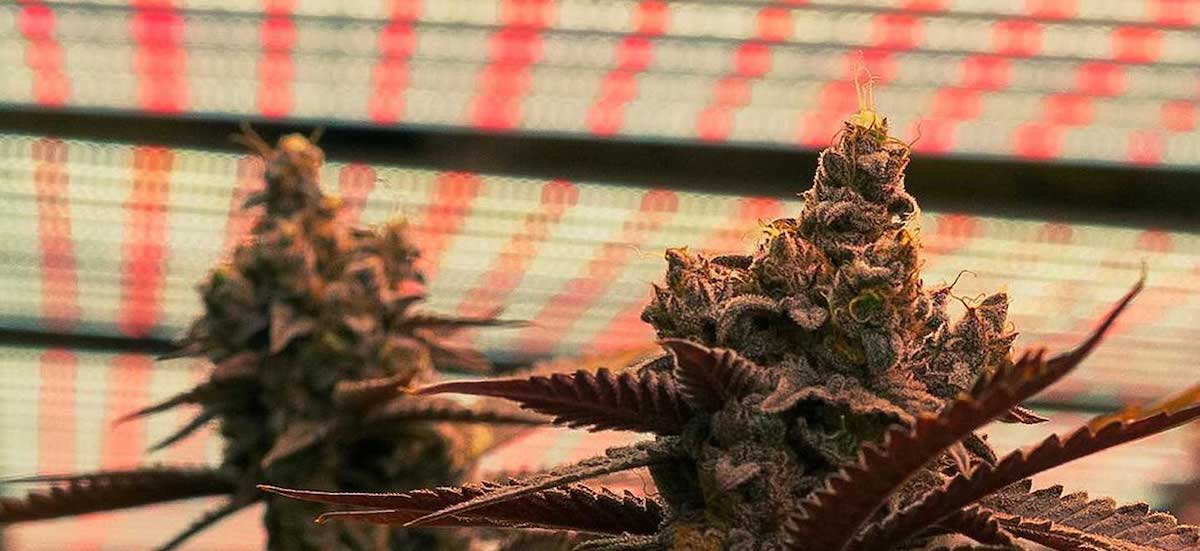
The Model R1 is a 4×4-foot rack with an adjustable spectrum, IP65 waterproofing, and 630 watts (63 watts per bar) of power with an expected lifetime of more than 54,000 hours. Agrify offers financing and can help cultivators apply for state-specific rebate programs for a better return on investment.
Gavita
Gavita, based in the Netherlands, manufactures lighting for both retail and cultivation environments. In addition to producing an assortment of reflectors, lamps, and master controllers, Gavita offers six core LED products available in three fixtures or form factors.
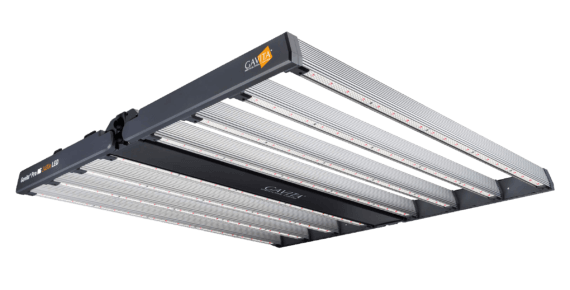
The Gavita Pro RS 2400e LED delivers a broad white light with an enhanced blue spectrum engineered to intensify terpene and cannabinoid profiles. The foldable eight-rail Pro RS was designed as a full-spectrum light source to create the optimal environment for the vegetative, bloom, and finishing stages.
When paired with a separate master controller, cultivators can dim the lights to 10 percent with no loss in efficiency and control more than 500 LED fixtures at one time. The Pro RS is assembled in the United States and comes with a limited five-year warranty.
Fohse
FOHSE manufactures LED and HPS replacement lights with everything from affordable 700-watt barebones craft indoor garden units to smart LED grow lights for commercial greenhouses. Fohse manufactures nine separate lighting systems to serve a wide variety of cultivator requirements and growing environments.
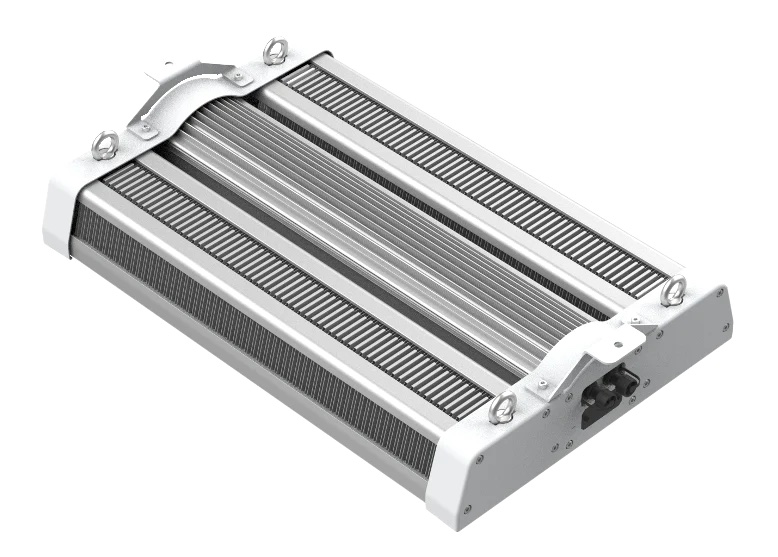
The A3i 1,500-watt industrial grow light is designed for high-bay, single-level environments with three spectral distribution modes. Each unit contains thousands of lighting diodes across six independent swiveling light bars that can be configured and adjusted for optimal light penetration at different stages of the grow.
The A3i’s thermally conductive aluminum and passive cooling help with efficiency, producing 60 percent more light per British thermal unit (BTU) than an HPS system. At full power, the surface temperature of the unit caps at a relatively low 115°F. Fohse is uncommon in its offer to price match against competitive products with similar wattage and technology from most major brands.
Fluence
Fluence serves the commercial cannabis and food industries, focusing on light spectrum and offering uncommon options for broad-spectrum, dual-spectrum, and mono-spectrum installations. The company consults with growers to determine their best spectrum options based on geographic location of greenhouse, natural light levels throughout the year, cultivars, growth stages, plants’ response to light, production yield, energy price, and expense.
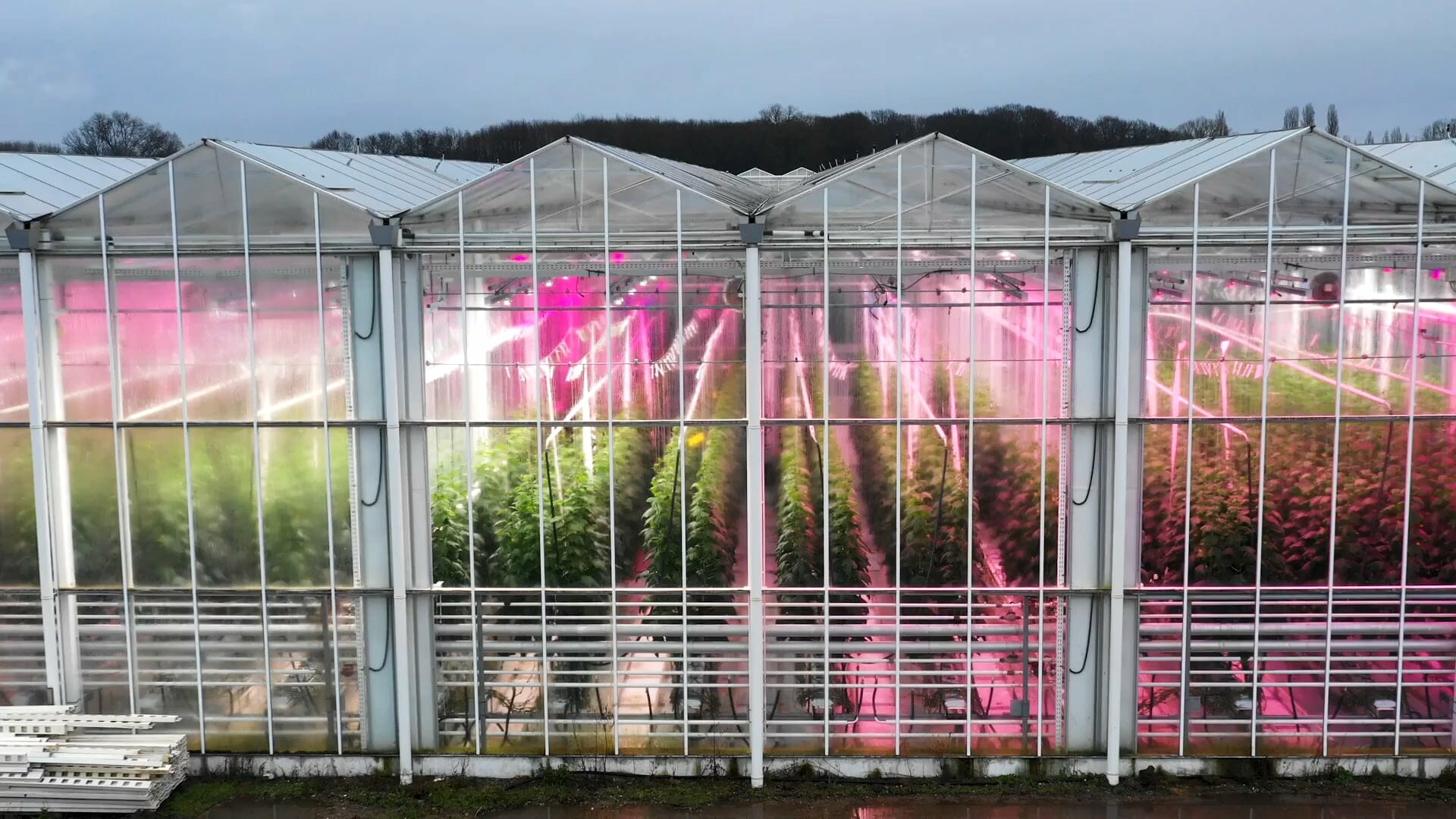
From broad white to high red, Fluence offers six spectrum options through its VYPR 3 top light series with efficacies of up to 3.8 micromoles per joule (µmol/J) — enabling the direct replacement of a 1,000-watt high pressure sodium (HPS) fixture with far less energy consumption. The slim VYPR includes six mounting options and the ability to run as a modular system configured as a single fixture or in a dual configuration. The VYPR3 comes with a five-year warranty.
Iluminar Lighting
Iluminar Lighting manufactures a broad range of LED and HID lighting products, selling to retailers and directly to consumers. On the LED side, Iluminar offers 11 fixture options in multiple form factors, sizes, wattages, light spectra, and efficacies to serve a wide variety of indoor plant and greenhouse requirements.
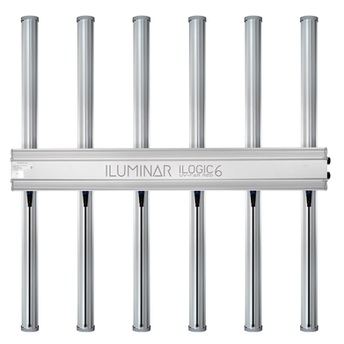
For clone rooms, Iluminar’s 18W Clone LED two-pack uses one-third the energy consumed by a similar fluorescent tube but offers more than twice the lifespan with 54,000 hours of expected use. The intensely blue 900K color temperature was selected to promote rooting, plant health, and vigorous growth in stem cuttings and seedlings. Each light bar can illuminate two propagators, and units can be daisy-chained using the included cables for greater coverage.
Illuminar also helps customers with the tedious and time-consuming process of applying for retrofit and new-build lighting rebates available in some markets.
Agro Lighting
Agro Lighting tailors its offerings to customers’ spaces, which is comforting for apprehensive growers interested in trying LED lights. Argo’s team assists customers with facility analysis, lighting design, and compliance-related energy consumption requirements to create a customized cultivation setup.
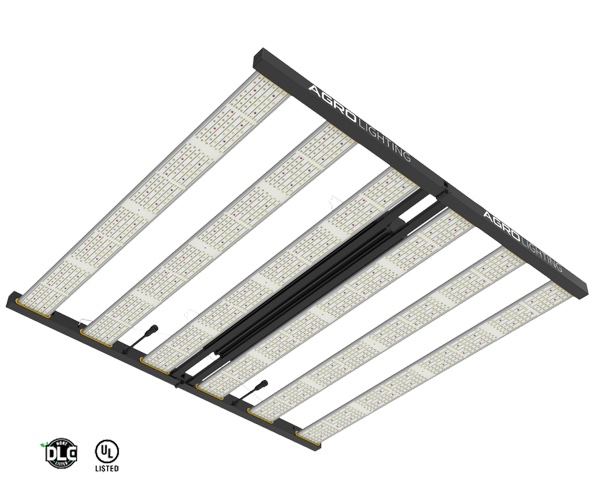
Argo has worked with growers of all sizes and in diverse locations, honing products for multi-level vertical cultivation and high-ceiling greenhouse settings. The Helios Series Model H is a full-spectrum, ultra-high-efficacy 2.7 (µmol/J) system engineered for greenhouse cultivators. The Model H produces the equivalent light output of a 1,000W HPS light while consuming only 600 watts, operating cooler thanks to the integration of copper cooling tubes in the heatsink.
Mars Hydro
Mars Hydro offers everything from small closet grow tents and ventilation systems to commercial indoor and greenhouse LED lighting. Many of the LED units are fitted with Samsung LEDs that feature a white-based full spectrum including green in addition to red and blue to stimulate photosynthesis, prevent disease, and encourage plants to make more bioactive compounds.
The Smart Grow System FC-800 commercial LED grow light is densely packed with Samsung LM301B chips, providing 2.9 μmol/J with the ability to daisy chain up to 30 fixtures. The 800-watt unit includes a five-year warranty with an expected lifespan of 50,000 hours.
Each can provide up to 16 square feet of coverage through eight adjustable LED light bars for better canopy penetration. The smart lighting system can be controlled via mobile app over WiFi or Bluetooth. Apple and Android users can group units, adjust brightness settings, and set custom schedules for daily lighting time.







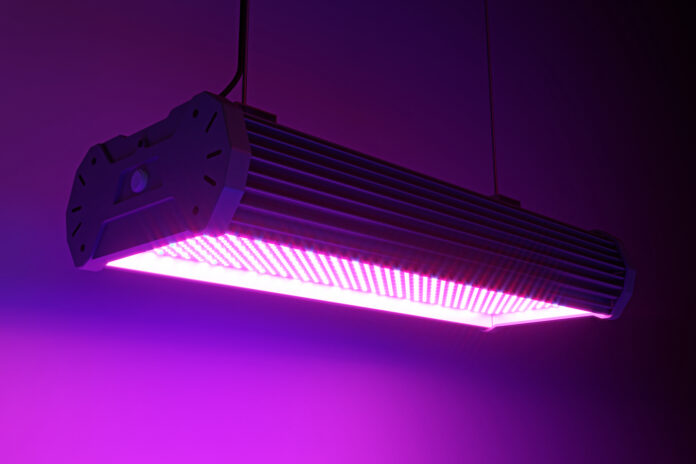



[…] of light, you should observe the distance between the fixture and the canopy recommended by the light supplier,” said Major. “The first sign of excessive light is usually that the leaves on the top […]
[…] production, I visited some of these warehouse grows in both the U.S. and Canada and saw the artificial light and air conditioning and dehumidification equipment, and I knew there had to be a better way to […]
[…] look at the footprint. The goal is to cover the canopy as evenly as possible. Lighting manufacturers typically supply a light map with their fixtures showing the wavelengths produced by the fixture […]
[…] should be one of the first considerations when planning a garden. Will plants be sun-grown or under artificial lights inside? How big is the […]
[…] wattage may seem like an input for more light, it’s not always the case. The wattage listed by a light manufacturer refers to the amount of energy a light requires to operate. The type of fixture and efficacy of […]
[…] Light emitting diodes, or LED lights, consist of many individual diodes mounted onto a heat sink, which defines the footprint of the light. All of the diodes are connected to a driver that controls how much power is delivered. […]
[…] bis plants require the right mix of light, air, water, and nutrients to reach their potential, and maintaining a clean and robust soil base […]
[…] retrospect, it’s hard to believe there ever was a question about whether light-emitting-diode (LED) illumination is the future of commercial cultivation. Even three to four years ago, growers remained skeptical […]
[…] has settled over some quarters. True, bickering on grow forums and Reddit about the best nutrients, lights, or trimming machines is nothing new among passionate people disputing best practices or personal […]